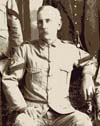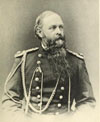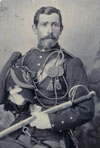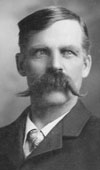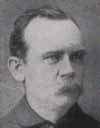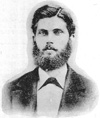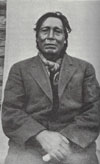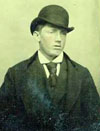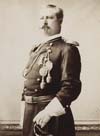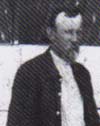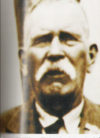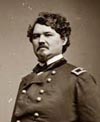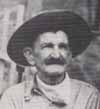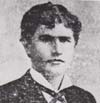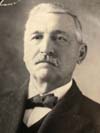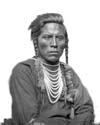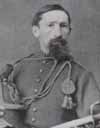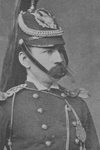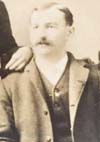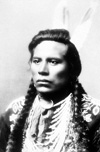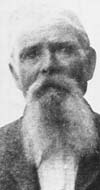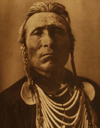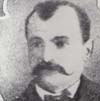George H. King died on July 2, 1876, in Pease Bottom, Montana Territory, where he was buried. In 1917, he was reinterred in the Custer National Cemetery on Crow Agency. He was a Corporal with Company A who participated in the valley and hilltop fights. He was wounded in the left shoulder on the evening of June 25 and was later evacuated to the steamer Far West where he died.
William W. Lasley (left) died on July 2, 1924, in Washington, D.C., and was buried in the Soldiers’ Home National Cemetery there. He was a Private with Company K who participated in the hilltop fight.
John Eaton Tourtellotte (right) was born on July 3, 1833, in Windham, Connecticut. He was the Captain of Company G who was not present during the battle due to detached service as an aide-de-camp and colonel on the staff of Gen. William Sherman. He had been assigned to the 7th Cavalry in 1870, but he never joined them.
George Weaver (left) was born on July 3, 1842 in Lancaster, Pennsylvania. He was a Private in Company M who participated in the valley and hilltop fights.
William Montell George, a Private in Company K, died aboard the Far West on July 3, 1876, of wounds he received during the hilltop fight. He was buried the following day beside the Yellowstone River in Montana Territory. His grave was moved some time later to higher ground.
Peter Orlando Barry died on July 3, 1907, in Morgan, Maryland, and was buried in the Morgan Chapel United Methodist Church Cemetery in Woodbine, Carroll County, Maryland. He was a Private in Company B who was not present at the battle due to detached service with Terry’s headquarters.
Thomas Mower McDougall (left) died in Brandon, Vermont, on July 3, 1909, and was buried in Arlington National Cemetery in Arlington, Virginia. He was a Captain commanding Company B who was with the pack train and in the hilltop fight.
Michael John Walsh died on July 3, 1932, in Newark, New Jersey. He was a Private with Company H who was not present at the battle due to being confined after desertion.
Happy Independence Day!
William J. Logue was born on July 4, 1841, in New York, New York. He was a Private in Company L who was with the pack train and in the hilltop fight.
Eugene L. Cooper, who used the alias George C. Morris, was born in Georgetown, Delaware, on July 4, 1851. He was a Corporal with Company I who was killed with Custer’s Column. The battlefield monument lists him as G. C. Morris.
Benjamin Franklin Churchill married Emily Valentine on July 4, 1880. He was a Quartermaster Packer who rode with the pack train and participated in the hilltop fight.
Lansing A. Moore (left) married Sarah Belcher on July 4, 1881, at Belcher Ranch, Custer County, Montana. He was a Private in Company F who was with the pack train and in the hilltop fight.
William J. Gregg (right) was born on July 5, 1847, in Baltimore, Maryland. He was a Private in Company F who was with the pack train and in the hilltop fight during the battle.
Walter Oliver Taylor (left) was born in Scituate, Rhode Island, on July 5, 1854. He was a Blacksmith with Company G who participated in the valley and hilltop fights.
James C. Bennett died at 3:00 a.m. on July 5, 1876, aboard the Far West. He was a Private in Company C who was with the pack train and in the hilltop fight. He was wounded in the chest during the second day of the battle.
The Far West arrived at Fort Abraham Lincoln at 11:00 p.m. on July 5, 1876.
John Shauer died in Seattle, Washington, on July 7, 1924, and was buried in the Evergreen-Washelli Memorial Park there. He was a Private in Company K who participated in the hilltop fight.
James Franklin Barsantee died on July 8, 1941, in Boston, Massachusetts. He was a Private in Company B who was with the pack train and in the hilltop fight.
